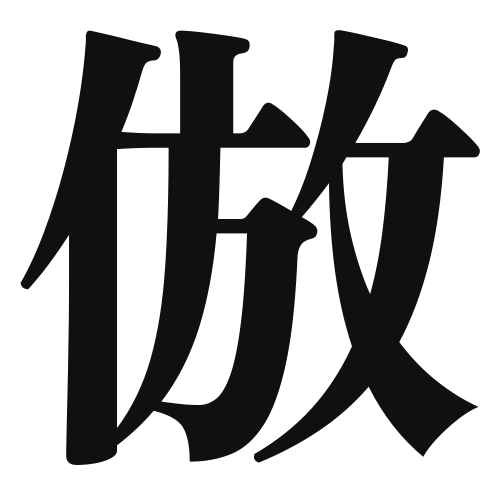1. Overview of Meaning
The kanji “倣” (hō) generally means “to imitate” or “to follow.” It conveys the idea of mimicking or adopting the behavior or style of someone or something else.
2. Formation and Radical
Formation of the Kanji: The kanji “倣” is a phonetic compound (形声文字), which combines the meaning of the left part (亻, a variant of the radical for “person”) with the right part (彷, which relates to wandering or roaming). This suggests the action of a person following or imitating.
Radical: The radical of “倣” is 亻, which is associated with human actions and behaviors.
3. Examples of Usage
Common Words and Phrases: Some frequently used words that include “倣” are 倣う (hōau – to imitate) and 倣い (hōai – imitation).
Example Sentence in Daily Conversation: 彼は彼の父を倣って、同じ職業を選びました。 (Kare wa kare no chichi o hōatte, onaji shokugyō o erabimashita.) – “He followed in his father’s footsteps and chose the same profession.”
4. Synonyms and Antonyms
Similar Kanji: A similar kanji is 模 (mo), which means “to model” or “to pattern.” While both imply imitation, 模 often refers to creating a model or representation, whereas 倣 emphasizes the act of following or mimicking.
Opposite Kanji: The kanji 逸 (itsu), meaning “to deviate” or “to stray,” can be considered an antonym, as it suggests moving away from imitation or following.
5. Cultural and Historical Background
Relation to Japanese Culture: In Japanese culture, the concept of 倣 is significant in various arts, such as calligraphy and traditional crafts, where students often imitate masters to learn techniques.
Proverbs and Idioms: A common saying is “模倣は創造の母” (Mohō wa sōzō no haha), which translates to “Imitation is the mother of creation,” highlighting the importance of imitation in the creative process.
